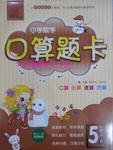题目内容
Will Maggie ________ her boy friend?
- A.marry
- B.marry to
- C.marry with
- D.married to
A
和某人结婚marry sb., be married to sb.。
和某人结婚marry sb., be married to sb.。

练习册系列答案
 口算题卡北京妇女儿童出版社系列答案
口算题卡北京妇女儿童出版社系列答案
相关题目
| ● DISPLAY ● OUR JOURNEYS ● 12 April-29 May 2008 Young people explore how they have adapted to life in Oxford. “When I first came here,” says one young African woman, “I just wanted to cry all the time. And now I have learned to laugh again.” Working with photographer Rory Carnegie and writer Nikki van der Gaag, young men and women explore their journey from the time they first arrived in a strange place to where they find themselves today. Organized by The Sunday Times Oxford Literary Festival (10-17 April 2008). Supported by the Maggie Black Trust and Oxford City Council. |
| ● ACTIVlTlES FOR CHlLDREN AND FAMILIES ● MODERN ART TROLLEY FREE Art activities for children every weekend during the exhibition in the Entrance Space from 2 p. m. to 4 p. m. Just drop in. Children must be led by an adult. |
| ● WORKSHOP FOR 8 TO 12 YEAR OLDS Thursday 7 April, 10:30 a. m. to 1:30 p. m. Looking at themes from the exhibition and exploring pictures based ideas through group discussion and using digital cameras. Led by Judie Waldmann. |
| ● BOOK LAUNCH FREE The Drawing Book by Sarah Simblet is a practical approach to drawing the world around you. Sarah Simblet, who teaches at the Ruskin School of Drawing and Fine Art, University of Oxford, will be present to give a short talk about the development of her book. Special price of£18 on copies purchased in the evening. Booking recommended on 01865 813802 |
| ● TEACHERS’ EVENING FREE Thursday 21 April, 5 p.m. to 7:30 p. m. Lecture by Susan Bright, independent writer and lecturer, at 5:30 p. m. followed by an opportunity to view the exhibition. FREE Education Notes will be provided for teachers attending the evening. |
| ● WORKSHOP FOR PRIMARY TEACHERS Saturday 7 May, 10:30 a. m. to 1:30 p. m. Workshop for primary teachers who would like to develop their practical art skill as well as gain an understanding of modern art practice. Led by Judie Waldmann, artist and former primary school teacher. |
| ● TALKS AND WORKSHOPS FOR SCHOOL GROUPS Exhibition talks and artist-led workshops to create work in response to the exhibition are available for pre-booked school groups. Suitable for primary and secondary schools, to check availability and discuss details call Sarah Mossop on 1865 813816. |
| A.TEACHERS’ EVENING |
| B.MODERN ART TROLLEY |
| C.WORKSHOP FOR PRIMARY TEACHERS |
| D.TALKS AND WORKSHOPS FOR SCHOOL GROUPS |
| A.Susan Bright will give a short talk at the launch of the Drawing Book. |
| B.Rory Carnegie and Nikki will teach young people how to take photos. |
| C.The workshop led by Judie is intended for the secondary school students. |
| D.The children who go to the Modern Art Trolley must be led by an adult. |
| A.FREE JOURNEYS | B.SPRING EVENTS |
| C.WEEKEND ACTIVITIES | D.ACTIVITIES FOR TEACHERS |
| A.if you attend “BOOK LAUNCH”, you can get the book at a low price. |
| B.school groups can attend talks and workshops for them at any time. |
| C.almost all the young people have difficulty in adapting to life in Oxford. |
| D.TEACHERS’ EVENING is only accessible to teachers. |